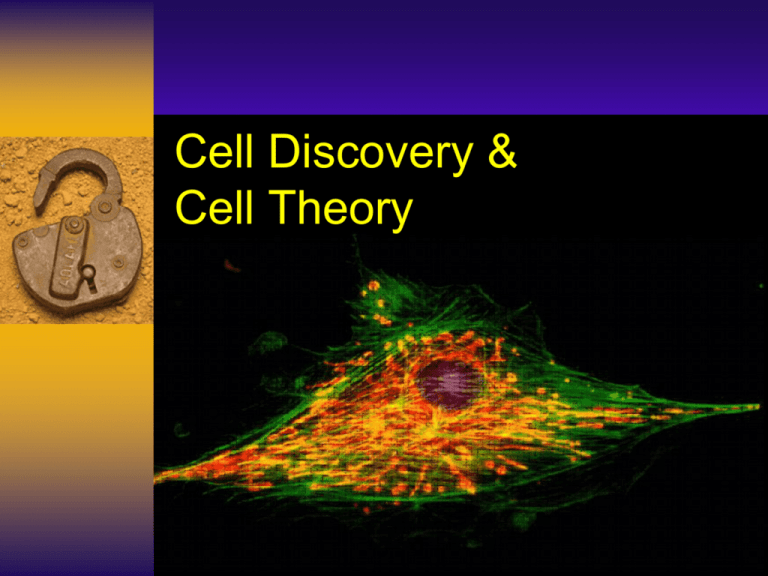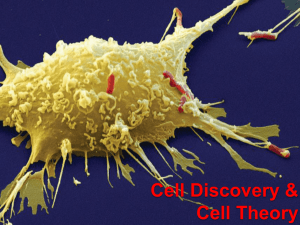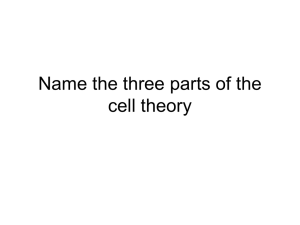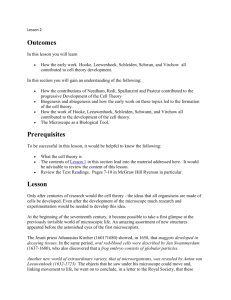PowerPoint Notes Cell Discovery & Cell Theory
advertisement

Cell Discovery & Cell Theory It all started with an invention…. The first microscope – Zacharias Jansen, 1595, Middleburg, Holland – It launched great leaps in Astronomy and Biology. – Some of the first great observations with it were made by… Robert Hooke (1635-1703) – Designed microscopes – Discovered and documented the first “cells” in 1665 • Named them after the cells in which a monk sleeps. From: http://www.ucmp.berkeley.edu/history/hooke.html Robert Hooke (1635-1703) Released book of detailed drawings and observations: Micrographia, 1665 Hooke had a life-long rivalry with Sir Isaac Newton. Newton worked hard to destroy his reputation during and after his death. Much of Hooke’s work was destroyed – even his gravesite is still unknown. Hooke’s drawing of a flea from: http://www.rod.beavon.clara.net/micro1.htm From the Museum of Natural History website: http://www.natmedmuse.afip.org/explore/micro/hooke.html http://micro.magnet.fsu.edu/optics/timeline/people/hooke.html Antony van Leeuwenhoek (1632-1723) A tradesman from Holland who became fascinated with Hooke’s book Discovered bacteria, freeliving protists, sperm cells, blood cells, nematodes, etc. Became an expert lens grinder and made over 500 simple microscopes Acute eyesight and lens grinding skill let him build microscopes that were capable of 200X magnification Cell Theory 1838 Mattias Schleiden stated that all plant tissues consisted of cells 1839 Theodore Schwann stated that all animal tissues consisted of cells Each conjectured that there was a nucleus 1858 Rudolf Virchow combined the two ideas and added that all cells come from preexisting cells, formulating the Cell Theory Rudolf Virchow 1858 Cell Theory All living things are composed of one or more cells In organisms, cells are the basic units of structure and function. All cells are produced only from existing cells. Modern Microscopes Some of the light microscopes here are capable of 1000x magnification. – That is about the limit of a light microscope’s magnification without losing clarity (called Resolving Power). • Due to the width of visible light’s wavelength The electron microscope was introduced in the 1950s and uses the wavelength of electrons to increase the resolving power by 100x. – Approx. 100,000x magnification!! – Cell Biology advanced rapidly as cellular organelles were clearly seen for the first time. Resolving Power Modern Microscopes Transmission Electron Microscope (TEM) magnifies a slice of a sample. (Rabbit trachea cilia) Scanning Electron Microscope (SEM) shows 3D image of the Rabbit trachea cilia A modern TEM Fruit fly with four eyes under an SEM






